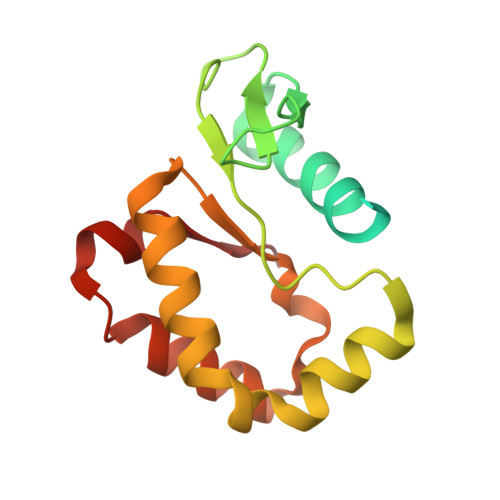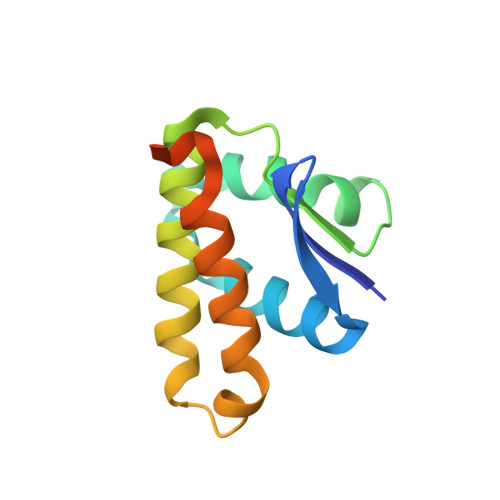Functional Diversity of Cytotoxic tRNase/Immunity Protein Complexes from Burkholderia pseudomallei.
Johnson, P.M., Gucinski, G.C., Garza-Sanchez, F., Wong, T., Hung, L.W., Hayes, C.S., Goulding, C.W.(2016) J Biol Chem 291: 19387-19400
- PubMed: 27445337
- DOI: https://doi.org/10.1074/jbc.M116.736074
- Primary Citation of Related Structures:
5J4A - PubMed Abstract:
Contact-dependent growth inhibition (CDI) is a widespread mechanism of inter-bacterial competition. CDI(+) bacteria deploy large CdiA effector proteins, which carry variable C-terminal toxin domains (CdiA-CT). CDI(+) cells also produce CdiI immunity proteins that specifically neutralize cognate CdiA-CT toxins to prevent auto-inhibition. Here, we present the crystal structure of the CdiA-CT/CdiI(E479) toxin/immunity protein complex from Burkholderia pseudomallei isolate E479. The CdiA-CT(E479) tRNase domain contains a core α/β-fold that is characteristic of PD(D/E)XK superfamily nucleases. Unexpectedly, the closest structural homolog of CdiA-CT(E479) is another CDI toxin domain from B. pseudomallei 1026b. Although unrelated in sequence, the two B. pseudomallei nuclease domains share similar folds and active-site architectures. By contrast, the CdiI(E479) and CdiI(1026b) immunity proteins share no significant sequence or structural homology. CdiA-CT(E479) and CdiA-CT(1026b) are both tRNases; however, each nuclease cleaves tRNA at a distinct position. We used a molecular docking approach to model each toxin bound to tRNA substrate. The resulting models fit into electron density envelopes generated by small-angle x-ray scattering analysis of catalytically inactive toxin domains bound stably to tRNA. CdiA-CT(E479) is the third CDI toxin found to have structural homology to the PD(D/E)XK superfamily. We propose that CDI systems exploit the inherent sequence variability and active-site plasticity of PD(D/E)XK nucleases to generate toxin diversity. These findings raise the possibility that many other uncharacterized CDI toxins may belong to the PD(D/E)XK superfamily.
Organizational Affiliation:
From the Departments of Molecular Biology and Biochemistry and.















